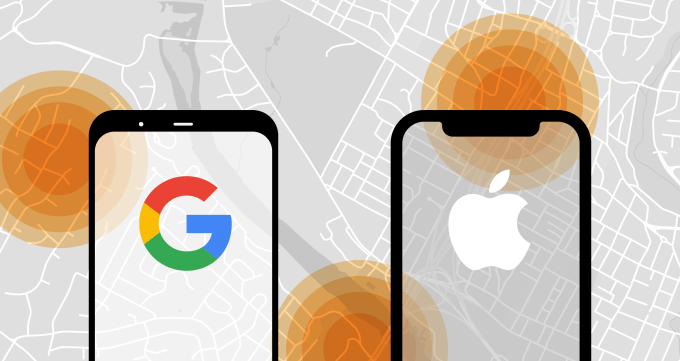Music
Trailers
DailyVideos
India
Pakistan
Afghanistan
Bangladesh
Srilanka
Nepal
Thailand
Iraq
Iran
Russia
Brazil
StockMarket
Business
CryptoCurrency
Technology
Startup
Trending Videos
Coupons
Football
Search
Download App in Playstore
Download App
Best Collections
Technology
As workers moved from office to home and students moved to being educated online, demand for new PCs surged in Q1, but Canalys found that shipments actually dropped 8% in spite of this, due to COVID-19 related supply chain problems.
The 8% drop was the worst since 2016 when shipments dropped 12%, according to the firm. Companies were looking to get new machines into the hands of employees who normally worked on desktop machines in the office, while parents were buying machines for children suddenly going to school online.
Rushabh Doshi, research director at Canalys says that products were flying off the shelves in Q1, but the PC makers couldn&t keep up with demand as supplies were limited due to a number of factors.
&…PC makers started 2020 with a constrained supply of Intel processors, caused by a botched transition to 10nm nodes. This was exacerbated when factories in China were unable to reopen after the Lunar New Year holidays.
&The slowdown in supply met with accelerated demand, as businesses were suddenly forced to equip a newly remote workforce, placing urgent orders for tens of thousands of PCs. Children, too, needed their own PCs, as schools closed and lessons went online,& Doshi explained in a statement.
Lenovo and HP owned the lionshare of the PC market in Q1 with 23.9% and 21.8% share respectively. Dell was in third with 19.6%. Apple was well behind in fourth place with just 6% of worldwide market share.
Only Dell projected positive growth with a modest 1.1% annual rate. All others were projected to be negative with Apple projecting the sharpest drop at -21%.

The good news is that from a revenue perspective, at least for the short term, these companies could command higher prices due to high demand and low supply, but overall the year looks bleak for PC makers, as Canalys predicts the rest of the year will see a further drop in sales as companies cut back on purchases, and consumers also likely limit purchases with so much economic uncertainty and demand satisfied for the short term.
- Details
- Category: Technology Today
Read more: Canalys finds PC demand surged in Q1, but shipments lagged due to supply issues
Write comment (97 Comments)Welcome back to This Week in Apps, the Extra Crunch series that recaps the latest OS news, the applications they support and the money that flows through it all.
The app industry is as hot as ever, with arecord 204 billion downloads in 2019and $120 billion in consumer spending in 2019, according to App Annie&State of Mobile& annual report. People are now spending 3 hours and 40 minutes per day using apps, rivaling TV. Apps aren&t just a way to pass idle hours — they&re a big business. In 2019, mobile-first companies had a combined $544 billion valuation, 6.5x higher than those without a mobile focus.
In this Extra Crunch series, we help you keep up with the latest news from the world of apps, delivered on a weekly basis.
This week we&re continuing to look at how the coronavirus outbreak is impacting the world of mobile applications, including Apple and Googleplans to team up on a contact tracing platform and other COVID-19 apps worldwide. We&re also looking at how WhatsApp is fighting fake news, and how home quarantines are impacting online grocery and dating applications. In non-COVID-19 news, we look at Quibi debut, Facebooknew app for couples and a possible iOS version of Android&Slices,& among other things.
Coronavirus Special Coverage
Apple and Google partner on COVID-19 tracing tools

Apple and Google announced on Friday a plan to join forces to create a decentralized tracing tool to help people determine if they&ve been exposed to someone with COVID-19. The first phase of the project is an API that public health agencies can integrate into their own apps. This will be followed by a system-level contact tracing system that works across iOS and Android and is opt-in. The system will involve transmitting an anonymous ID over Bluetooth. The servers will relay your last 14 days of rotating IDs to other devices that look for a match based on time spent and distance between two devices. If a match is found, you&re notified so you can get tested and self-quarantine.
The APIs will be available in May, while the Bluetooth-based system will be released in the months ahead.
Other COVID-19 apps in the news
- EU suggests standardization: This week, the EU began pushing for its 27 nations to develop common standards for coronavirus tracking technologies that would make apps interoperable or even perhaps develop a single app to be used across the bloc, Bloomberg reported. Today, multiple developers in the U.K., Germany and elsewhere are working on mobile phone apps to track people who&ve been exposed to the coronavirus, but the data will be harder to aggregate and understand in its fractured state.
- France to develop a contact-tracing app: France is officially working on a smartphone app to slow the spread of COVID-19, by tracking people living in France. The app will leverage the PEPP-PT protocol, which will involve an open standard using BLE to identify other phones running the app.
- How Chinese apps handled COVID-19: A post from Dan Grover analyzes how Chinese apps from major tech companies like Baidu, WeChat, Alipay and others worked to help people get through the coronavirus crisis by offering statistics, e-medicine, tools for quarantine, e-commerce and tools to check your exposure. By comparison, the U.S. has largely just added PSAs from the CDC and WHO to their platforms, instead of having offered more robust solutions. The pros and cons of both are debated from an app-centric point of view, which makes for interesting reading from a more technical perspective.
- COVID-19 symptom checker from startup Zoe arrives in U.S.: A free iOS andAndroid application called COVID Symptom Tracker was originally developed in partnership with food science startup Zoe and released first in the U.K. After a million downloads, the app is now launching in the U.S.
- Stanford Medicine app helps first responders get tested: Stanford, in partnership with Apple, launched an app that helps first responders get access to drive-thru coronavirus tests. This includes front-line workers like police officers, firefighters and paramedics. The service is limited to Santa Clara and San Mateo counties in California for now, but will later expand to other states.
- Details
- Category: Technology Today

Another week in quarantine.
As the world adjusts to working from home under mandatory stay-at-home orders, hackers are keeping busy. Microsoft said this week that coronavirus-related attacks are on the rise but still make up just a fraction of the overall malicious activity. Cybersecurity companies seem to be faring mostly well — in part thanks to the uptick of attacks, but also the challenges of securing the workforce as hundreds of millions work from home.
But as coronavirus dominates the headlines, the wheels of government keep turning. Lawmakers are trying to push through a controversial bill that critics say would undermine encryption, which keeps everything from your phone to your online banking accounts safe. One startup is bracing for a showdown. Signal, the end-to-end encrypted messaging app, sounded the alarm when it warned this week that it may exit the U.S. market if Congress passes the controversial EARN IT Act.
In a blog post this week, Signal engineer Joshua Lund wrote it would ¬ be possible for a small nonprofit like Signal to continue to operate within the United States.&
Will encryption become the latest causality of this tumultuous year?
THE BIG PICTURE
Zoom slapped with more security woes, but calls in the cavalry
A growing number of companies and governments, from SpaceX and Google to Taiwan and Germany, have banned Zoom. Not even the U.S. Senate is taking any chances with the video-calling software, which has faced a steady stream of headlines critiquing its security practices and privacy policies. But Zoompopularity, undoubtedly sparked by the mass working from home to stem the spread of the coronavirus pandemic, seems to be weathering the storm.
- Details
- Category: Technology Today
Read more: Decrypted: Zoom's security results, Crowdstrike's brand-new CTO, Bugcrowd raises $30M
Write comment (99 Comments)
In a blog post that came seemingly out of nowhere, Sony finally revealed the new DualSense PS5 controller. It marks a radical departure from the DualShock 4, but the redesigned pad will share one thing in common with its predecessor – developers will continue to ignore almost all of its unique features.
And that’s a shame, as the DualSense is s
- Details
- Category: Technology Today
Read more: The DualSense PS5 controller is packed with elegant functions - yet they won't get used
Write comment (99 Comments)Emily de La Bruyère Contributor Share on Twitter Emily de La Bruyère is founder of Perspective Advisory, an approach consultancy focused on recording the army, financial, and also technical ramifications of China&& s approach to international competitors . Nathan Picarsic Contributor Nathan Picarsic is founder of Perspective Advisory, a strategy working as a consultant focused on documenting the military, financial, and technological effects of China&& s approach to global competitors. SpaceX has outlawed use Zoom for remote operations. So have Google, Apple, NASA, and also New york city City institutions. Previously this week, the FBI cautioned regarding Zoom teleconferences as well as live class being hacked by giants; safety and security specialists alert that holes in the innovation make user information susceptible to exploitation. Zoom&& s Chief Executive Officer, Eric Yuan, has this week openly &admitted that he & messed up & on personal privacy and security.&Perhaps we shouldn & rsquo ; t use Zoom besides Yet we are missing out on a bigger question as we come to grips with Zoom & s security problems. Who controls the system? Who takes advantage of it? Zoom obtained its seed funding from TSVC, which presents as a Los Altos-based equity capital company however attaches the funds of a Chinese State-owned Venture, Tsinghua Holdings. Started and run by a Chinese entrepreneur, Zoom & s mainline app is developed by China-based subsidiaries. Zoom web servers in China show up also to be making its AES-128 file encryption secrets, consisting of, as a Resident Labs report records, some made use of for conferences amongst North American participants. Beijing&& s personal privacy laws most likely obligate China-manufactured secrets to be shown Chinese authorities. Zoom is precisely the kind of tool that Beijing worths. The Chinese Communist Event (CCP) pursues a decades-long grand method to establish as well as record worldwide networks as well as systems & with them to specify international requirements. Hold over criteria assures withstanding control of global sources, exchange, as well as info; an international geopolitical operating system with coercive may. Beijing has formally recommended this passion considering that its 2001 inauguration to the Globe Profession Organization, when it introduced the National Standardization Approach.. Currently, the CCP is putting that intent right into activity. Beijing will release China Criteria 2035, an industrial plan to compose international policies. China Criteria 2035 is the follower to Made in China 2025; an also bolder prepare for the subsequent years assumed out governing where international products are made, however on establishing the requirements that define manufacturing, exchange, and also intake.. Beijing completed 2 years of preparing for China Standards 2035 at the start of March. The last technique paper is projected to be released this year. While the specifics of China Specifications 2035 have yet to be published, the intent & and also focus areas & are already evident. The National Standardization Committee has actually released its preliminary report for the year in advance, the && Key Details of National Standardization Operate In 2020. & Our firm, Horizon Advisory, has actually translated as well as examined that report & and the previous two years of planning that notified it. We discover in it directions to & confiscate the possibility & that COVID-19 produces by multiplying China & s tyrannical information program; to co-opt international industry by catching the commercial Internet of Points; to specify the future generation of infotech and also biotechnology infrastructures; to export the social credit history system & and Beijing&& s bigger list of incentive-shaping platforms. We find a specific international passion that weaponizes commerce, resources, and also cooperation.. As Beijing sees it, the world is on the verge of change. && Sector, innovation, as well as technology are developing& rapidly, & described Dai Hong, Supervisor of the Secondly Division of Industrial Standards of China & s National Standardization Monitoring Board in 2018. & Global technical standards are still being developed. This gives China & s industry as well as standards the chance to exceed the globe & s. & Dai was talking at the commencement of China Criteria 2035 & s intending phase. He stated that the plan would focus on & incorporated circuits, digital truth, smart health as well as retired life, 5G key components, the Net of Things, infotech devices interconnection, and solar photovoltaics. & Throughout, the emphasis would certainly be on & internationalization & of Chinese standards. 2 years later on, China Requirements 2035 & s preliminary research study results disclose the concrete implications of those buzzwords. China Standards 2035 is to concentrate on setting criteria in arising industries: high-end equipment manufacturing, unmanned cars, additive production, brand-new products, the industrial web, cyber security, new energy, the ecological market. These align with the focus areas of the Strategic Arising Industries campaign —-- likewise of Made in China 2025. Having actually protected its foothold in targeted physical balls, Beijing prepares to specify their rules.. DJI has a close to monopoly over commercial drone systems. The National Standardization Administration is now bent on && developing the worldwide criteria ‘for & lsquo; Classification of Civil Unmanned Airplane Solution & to help the residential drone industry inhabit the technological commanding elevations.&& & & Second, China Criteria 2035 will certainly speed up Beijing & s proliferation of the virtual systems underlying, and also linking, those markets: the social credit score system, the State-controlled National Transportation Logistics Platform (known as LOGINK), as well as clinical as well as consumer good criteria. The plan & s 3rd prong is internationalization. The Key Details lay out the intent to & offer full play to the business as well as coordinating duties of the Chinese National Boards of the International Criteria Company( ISO) and also International Electrotechnical Payment( IEC). & Reports from the National Standardization Committee discuss that giving && full play & suggests shaping & strategies, plans, and also guidelines. & Beijing is to bolster internationalization via bilateral as well as local standards-based collaborations & partnerships like China and Nepal & s standardization teamwork&contract, ASEAN & s criteria docking, and also nascent initiatives with Germany, the United Kingdom, and Canada, to name a few. China & s requirements intend stems from a clear, deliberate critical development. Beijing has invested the previous 20 years developing significant footholds in multilateral bodies and also targeted enterprise zones. Currently, it is using those footings to establish their guidelines & with them, to define the framework of the future globe. According to China & s critical planning, this is what power implies in &a globalized age: & The strategic video game among huge powers is no more restricted to market range competitors or that for technical supremacy. It is extra regarding competition over system&layout and also rule-making. & Yet no person seems noticing China & s tactical positioning. Not much appears when you Google China Requirements 2035. That was a serious&shortage before COVID-19 & s international catastrophe. The risks are greater now. Worldwide shutdown has actually developed what the CCP calls a chance to increase its critical offensive. Our lock-down caused reliance on digital links has provided Beijing an unmatched angle in. As we grapple with the COVID-19 calamity, we require likewise to withstand Beijing&& s exploitation of it. We require to acknowledge the function of criteria and the manner in which the CCP weaponizes them. We need to compete for alternative, secure, norm-based ones & and secure them from Beijing&& s affect. Or we require to obtain made use of to security, privacy, possession, liberty problems even more severe than giants at Zoom
- Details
- Category: Technology Today
Read more: China's next plan to dominate international technology standards
Write comment (100 Comments)Broadband deal: John Lewis's £& pound; 40 present card offer is among UK's least expensive web plans


You don't need us to tell you that times are strange. But somethings just don't change, with internet providers taking the Easter weekend to drop some of their best ever broadband deals.
This year it's John Lewis's turn to impress. It has reintroduced its £40 gift card freebie, which is available on the retail giant's already excellent £20 a month c
- Details
- Category: Technology Today
Page 980 of 1421

 12
12





